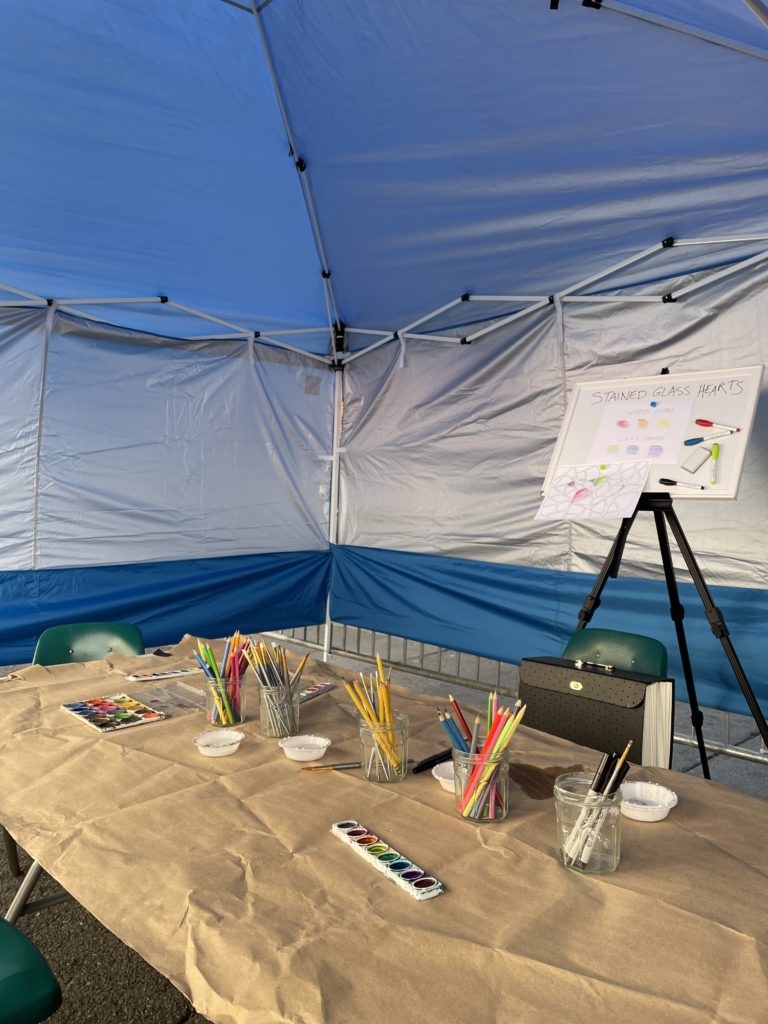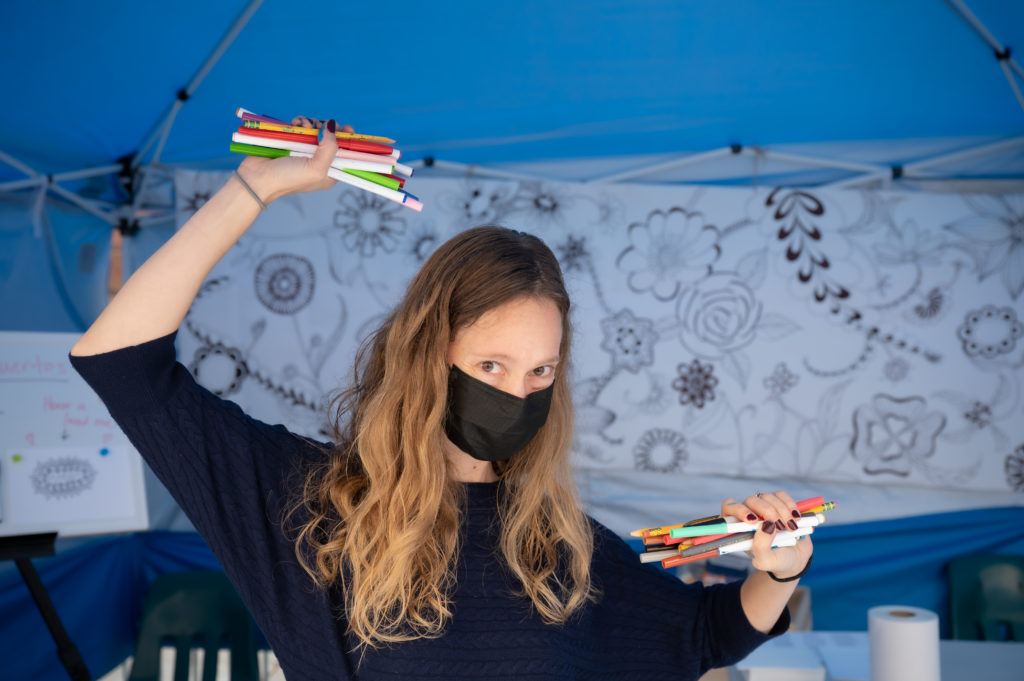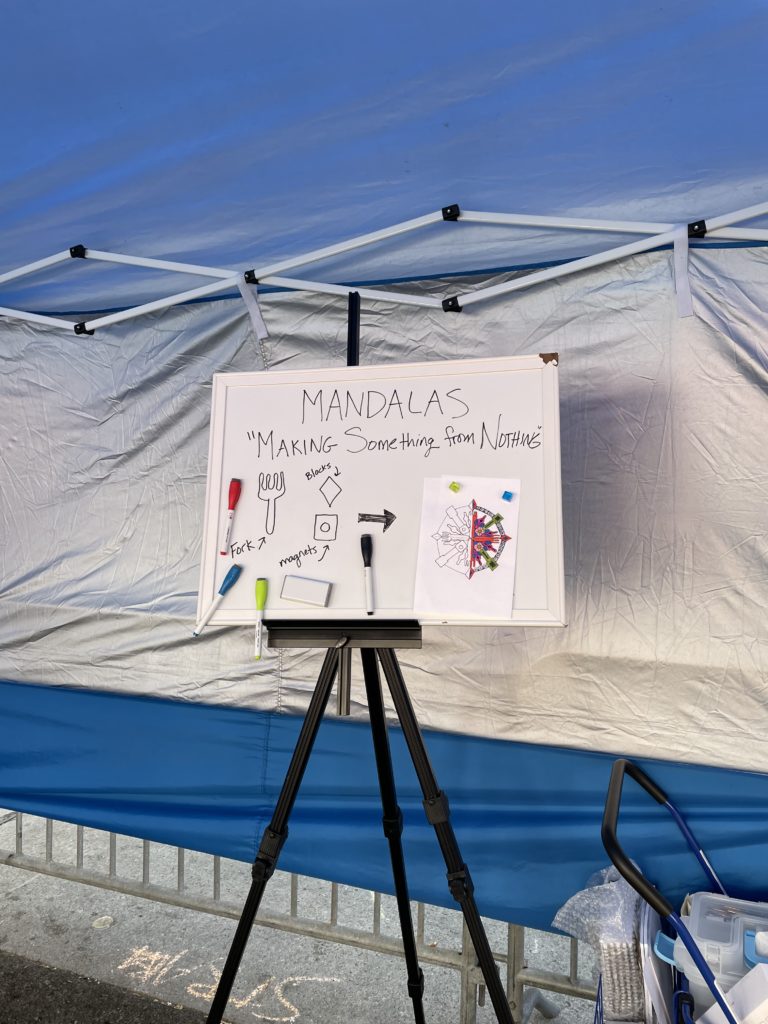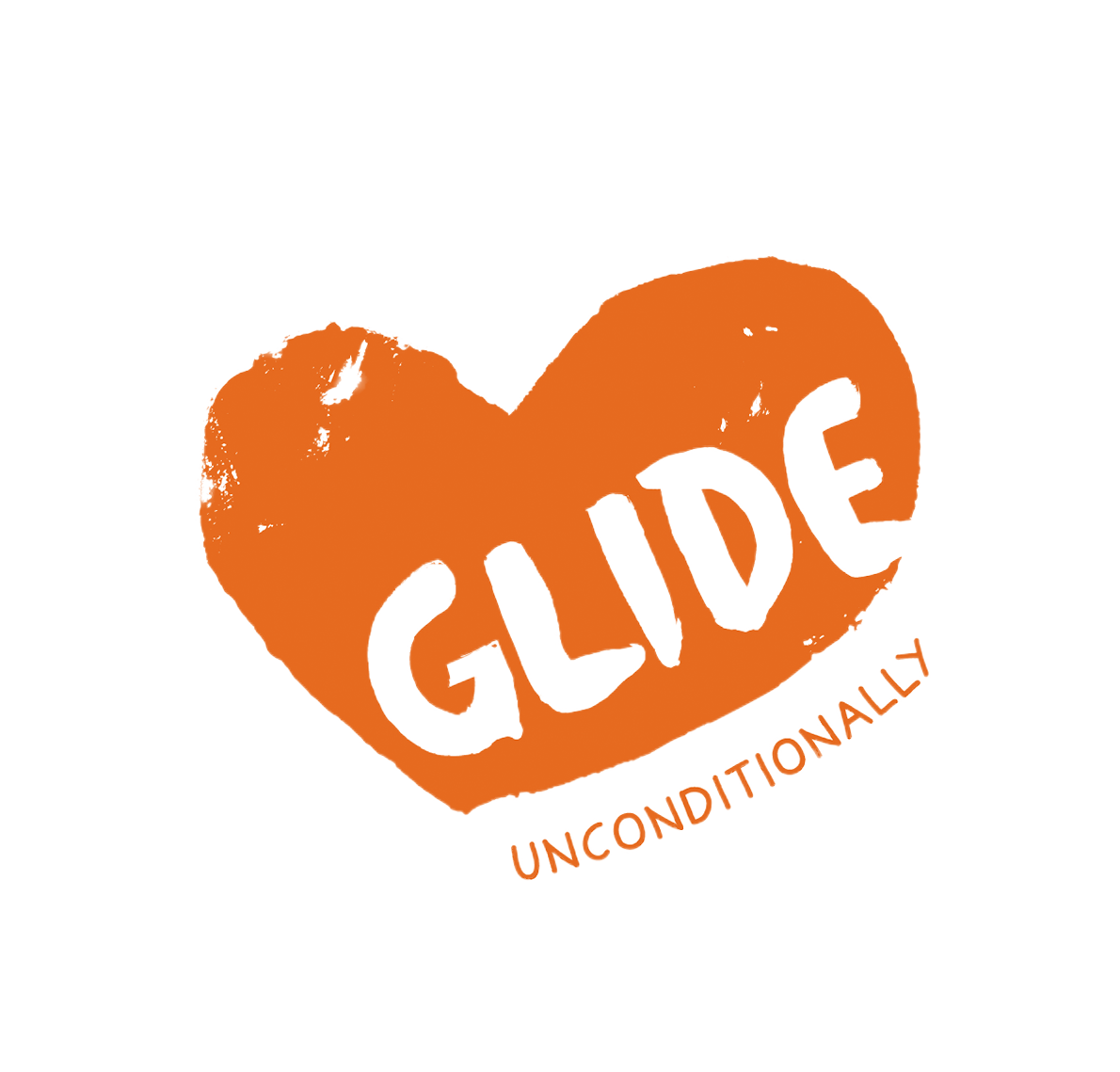Every Tuesday and Thursday morning, Toby Simon sets up her tent and art supplies on the Tenderloin Hub, providing a class to the community that is aptly named, “A Space to Draw.” At surface level, the art class explores different forms of drawing and technique, allowing students to build upon their skills. But for many of the participants, A Space to Draw dually provides a space for healing, self-discovery, and reflection.
The idea for A Space to Draw came about when Toby attended a volunteering event with The Kitchen SF, at GLIDE. Toby was struck by GLIDE’s mission of radical inclusivity and the breadth of services offered to the community. She then posed the idea of incorporating a space to make art at GLIDE and create a classroom where one did not exist before. She was soon popping up her tent in GLIDE’s parking lot, with clay, canvasses, and paints. The art class quickly became the highlight of the week for her students.

“As an art educator, I think the greatest impact I can make is imparting a sense of growth mindset on the community,” Toby says. “I think that a lot of the community members have experienced years of abuse, neglect, and bad luck, and years of this trauma can really be detrimental to self-worth and mental health. Students come in and realize that they have a voice, and they can share their ideas.” For Toby, learning new skills, such as art, is an important mechanism for building self-confidence, which in turn permeates into all aspects of a students’ life.

In vulnerable communities, arts and culture can be powerful tools for community development, shaping infrastructure, transportation, access to healthy food, and other core amenities. In communities of color that have been systematically stripped of agency, art is an avenue for strengthening cultural identity, healing trauma, and fostering a shared vision for community.
A Space to Draw consists of two classes, “Drawing From Life” and “Rhythmic Drawing.” Rhythmic drawing teaches mindful and meditative techniques such as pattern making, doodling mandalas, and coloring pages, all of which are simple, meditative forms of drawing and painting where students can get into a creative flow. Drawing From Life teaches techniques on how to draw realistic form, shading techniques, and figure drawing. The class allows students to tap into their inner resources to have moments of self-discovery while creating pieces of art.

“Art serves as a form of communication,” Toby says. “People are constantly opening up, thinking about the significance of what they made.” Toby recalls a time when one student made a drawing that portrayed her desire to pursue an education. The student had made a shape on one side of the page, which represented her regret of not graduating 8th grade. On the other side, the student illustrated her ambition of returning to school and graduating.
“A benefit of a drawing class is that it empowers people, women especially, who feel like they’ve lost their voice,” says Toby. “Experiencing trauma or constant marginalization severely impacts a person’s sense of self-worth. Our students have so much to contribute, and I simply offer them new methods of expressing themselves and a space to share their stories.”
